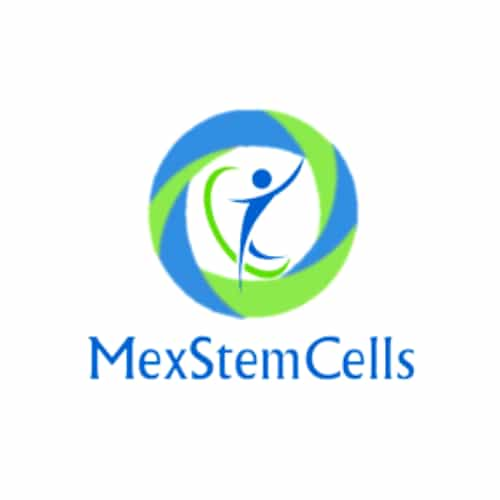Stem Cell Therapy in Mexico: Is It Legal and Safe?
.png)
Thinking about stem cell therapy and wondering if Mexico is a viable option? You're not alone! Many people globally are looking into medical tourism for cutting-edge treatments, and Mexico has emerged as a significant player in the field of regenerative medicine, particularly for stem cell treatments. It's a common misconception that these therapies are unregulated or illegal there, but the reality is more nuanced.
In this guide, we'll dive deep into whether Mexico allows stem cell therapy, explore the regulatory landscape, discuss the types of treatments available, and address critical questions about safety, cost, and how to choose a reputable clinic. Whether you're considering stem cell therapy for autoimmune diseases, neurological conditions, or orthopedic issues, understanding the options in Mexico is a crucial first step. Let's explore the facts about stem cell therapy in Mexico to help you make informed decisions.
Is Stem Cell Therapy Legal in Mexico?
Absolutely, stem cell therapy is legal in Mexico. Unlike the more restrictive environment in some countries, particularly the United States, Mexico has developed a framework that permits the use of various types of stem cells for therapeutic applications. This has led to a growth in clinics offering regenerative treatments to both domestic and international patients.
The regulatory body overseeing these treatments is the Federal Commission for the Protection against Sanitary Risks, known as COFEPRIS. COFEPRIS is responsible for licensing clinics, approving protocols, and ensuring patient safety. While the regulations might differ from those in other countries, they do exist and are designed to protect patients seeking stem cell treatments in Mexico. Patients should always verify that any clinic they consider is properly licensed and adheres to these guidelines.
What Types of Stem Cell Therapies Are Offered in Mexico?
Mexico stem cell therapy clinics typically offer treatments using mesenchymal stem cells (MSCs). These are multipotent stromal cells that can differentiate into a variety of cell types, including osteoblasts (bone cells), chondrocytes (cartilage cells), adipocytes (fat cells), and muscle cells. MSCs are highly favored for their immunomodulatory, anti-inflammatory, and regenerative properties.
Common sources for these MSCs include:
- Umbilical Cord Blood and Tissue: This is a popular source as it yields young, potent cells that are ethically sourced and less likely to carry genetic mutations associated with aging.
- Adipose (Fat) Tissue: Easily harvested through a minimally invasive liposuction procedure, adipose tissue contains a rich supply of MSCs.
- Bone Marrow: Harvested from the patient's own bone marrow, these cells are autologous, meaning they come from the patient's own body, reducing the risk of immune rejection.
These cells are used to address a spectrum of conditions, from orthopedic injuries and autoimmune diseases to neurological disorders and anti-aging treatments. The specific type of stem cell and its source will depend on the patient's condition and the clinic's specialized protocols.
How Does Mexico's Stem Cell Regulation Compare to the US FDA?
The primary difference between Mexican stem cell regulations and those of the US FDA lies in their approach to stem cell treatments. In the United States, the FDA generally classifies processed stem cells used for therapeutic purposes as a drug or biological product. This means that extensive clinical trials, similar to those for new pharmaceuticals, are required before a treatment can be approved and widely offered. This stringent process results in very few FDA-approved stem cell therapies being available outside of research settings.
In contrast, COFEPRIS in Mexico has a regulatory framework that, while aiming for safety, allows for broader access to stem cell therapies. This often means treatments available in Mexico might not yet have FDA approval for general use in the US, but are considered legal and regulated within Mexico. This difference is a key reason many US and international patients seek stem cell therapy in Mexico, as it provides access to treatments that are otherwise difficult to obtain.
What Are the Advantages of Seeking Stem Cell Treatment in Mexico?
Seeking stem cell treatment in Mexico offers several compelling advantages for patients:
- Broader Treatment Accessibility: Mexico provides access to a wider range of stem cell therapies that may not be available or approved in a patient's home country due to different regulatory landscapes. This is particularly true for conditions where conventional treatments have limited efficacy.
- Cost-Effectiveness: The cost of stem cell therapy in Mexico is often significantly lower than in countries like the United States, even for comparable quality of care and advanced technologies. This makes cutting-edge regenerative treatments more financially accessible for many patients.
- Advanced Medical Infrastructure: Many Mexican clinics specializing in stem cell therapy boast state-of-the-art facilities, modern equipment, and highly trained medical professionals, including doctors with international certifications and extensive experience in regenerative medicine.
- Geographical Proximity: For patients from North America, Mexico offers convenient travel options, making the journey for treatment less arduous and more affordable than traveling to other regions of the world.
- Personalized Care: Clinics in Mexico often provide a more personalized patient experience, with dedicated staff and comprehensive care plans tailored to individual needs.
These factors contribute to Mexico's growing reputation as a leading destination for medical tourism, especially in the field of stem cell therapy.
How Much Does Stem Cell Therapy Typically Cost in Mexico?
The cost of stem cell therapy in Mexico is highly variable, making it difficult to provide a single price. Factors influencing the total cost include:
- Type of Condition: Treating a complex neurological condition might be more expensive than treating a localized orthopedic injury.
- Type of Stem Cells: The source (e.g., umbilical cord, adipose, bone marrow) and processing of the stem cells can impact the price.
- Dosage and Number of Treatments: Higher cell counts or multiple treatment sessions will naturally increase the overall cost.
- Clinic Reputation and Location: Renowned clinics in popular medical tourism cities like Tijuana, Cancun, or Guadalajara might have different pricing structures.
- Included Services: Some clinics offer package deals that include consultations, post-treatment care, and even accommodation, while others charge for each service separately.
Generally, patients can expect prices for a single stem cell therapy session in Mexico to range from approximately $5,000 to $20,000 USD, though some extensive treatments could exceed this range. It is crucial to get a detailed quote directly from the clinic after an initial consultation to understand all costs involved.
How Can I Find a Reputable Stem Cell Clinic in Mexico?
Finding a reputable stem cell clinic in Mexico is essential for ensuring safety and effective treatment. Here are key steps and considerations:
- Verify COFEPRIS Accreditation: Ensure the clinic is licensed and regulated by COFEPRIS. This is the fundamental stamp of approval for legal operation.
- Research Physician Credentials: Look for doctors who are board-certified, have extensive experience in regenerative medicine, and are transparent about their qualifications and training.
- Understand Treatment Protocols: A reputable clinic will clearly explain the science behind their stem cell treatments, the specific type of cells used, their source, and the method of administration. They should also manage expectations about potential outcomes.
- Seek Patient Testimonials and Reviews: Look for consistent positive feedback from previous patients. Be cautious of clinics with overly aggressive marketing or exaggerated claims of success.
- Transparency in Pricing: A trustworthy clinic will provide a clear breakdown of costs without hidden fees and be upfront about what is included in the treatment package.
- Comprehensive Consultations and Follow-up: The clinic should offer thorough initial consultations to assess your suitability for treatment and provide robust follow-up care to monitor your progress.
Asking detailed questions and doing your due diligence before committing to a clinic is vital for a positive experience with stem cell therapy in Mexico.
Is Stem Cell Therapy for Autoimmune Diseases Available in Mexico?
Many clinics in Mexico offer stem cell therapy for autoimmune diseases. Autoimmune conditions occur when the body's immune system mistakenly attacks its own healthy tissues. Mesenchymal stem cells (MSCs) are particularly appealing for these conditions due to their unique properties:
- Immunomodulatory Effects: MSCs can modulate the immune system, helping to reduce the inflammatory response and potentially rebalance immune function.
- Anti-inflammatory Properties: They produce various anti-inflammatory molecules that can help soothe inflamed tissues and reduce pain associated with autoimmune flares.
- Regenerative Potential: While primarily focused on immune modulation, MSCs can also contribute to tissue repair in areas damaged by chronic inflammation.
Conditions commonly treated with stem cell therapy for autoimmune diseases in Mexico include rheumatoid arthritis, lupus, Crohn's disease, and certain types of multiple sclerosis. Patients often seek these treatments when conventional therapies have not provided sufficient relief or when they are looking for alternative approaches to manage their symptoms and potentially slow disease progression.
Can Stem Cell Therapy in Mexico Help with Neurological Conditions like MS?
For individuals living with neurological conditions such as Multiple Sclerosis (MS), Parkinson's disease, and spinal cord injuries, stem cell therapy in Mexico offers a promising avenue. The regenerative and immunomodulatory characteristics of mesenchymal stem cells are particularly relevant here:
- Reducing Inflammation: In conditions like MS, chronic inflammation contributes significantly to nerve damage. MSCs can help to dampen this inflammatory response.
- Neuroprotection: They may secrete growth factors and other molecules that protect existing neurons from further damage.
- Myelin Repair: While challenging, there's ongoing research and anecdotal evidence suggesting MSCs might play a role in promoting the repair of the myelin sheath, which is damaged in MS.
- Improved Function: Patients have reported improvements in symptoms such as fatigue, spasticity, balance, and cognitive function after stem cell treatments, though results can vary.
It's important to approach these treatments with realistic expectations and understand that while many patients experience improvements, stem cell therapy for complex neurological conditions is still considered experimental in some contexts, and results are not guaranteed. However, for those seeking options beyond conventional care, Mexico provides accessible pathways to these advanced therapies.
What Should I Know About Medical Tourism for Stem Cells in Mexico?
Medical tourism for stem cells in Mexico has grown significantly, attracting patients from around the world. Here's what you should know:
- Planning is Key: Thorough research is crucial. This includes verifying clinic credentials, physician experience, and patient reviews. Understand the entire treatment plan, from initial consultation to post-treatment care.
- Logistics: Consider travel arrangements, accommodation, and local transportation. Many clinics offer assistance with these aspects, especially for international patients. It’s also wise to understand the visa requirements and local culture.
- Communication: Ensure clear communication with the medical team. Many clinics catering to international patients have English-speaking staff, but confirming this beforehand is beneficial.
- Post-Treatment Care: Understand what follow-up care is provided and how it will be managed, especially once you return home. Some clinics offer remote consultations, while others may require return visits.
- Cost Transparency: Get a detailed breakdown of all expenses upfront, including treatment costs, consultations, lab fees, and any potential follow-up procedures.
By carefully planning your journey and choosing a reputable clinic, you can have a positive and potentially life-changing experience with stem cell therapy in Mexico.
What Are the Safety Considerations for Stem Cell Therapy in Mexico?
While stem cell therapy in Mexico is legal and increasingly popular, it's vital to prioritize safety. As with any medical procedure, risks exist, and understanding them is crucial:
- Clinic Accreditation: The most significant safety measure is ensuring the clinic is fully accredited and regulated by COFEPRIS. This indicates adherence to established health and safety standards.
- Sterility and Quality Control: Reputable clinics will have stringent protocols for cell harvesting, processing, and administration to prevent contamination and ensure the quality of the stem cells. Inquire about their lab standards and certifications.
- Physician Expertise: Verify that the doctors administering the therapy are qualified, experienced, and specialize in regenerative medicine. Their expertise significantly impacts the safety and efficacy of the treatment.
- Potential Side Effects: While generally considered safe, some patients might experience minor side effects like pain, swelling, or bruising at the injection site. More severe, though rare, risks can include infection, allergic reaction, or immune response. A thorough consultation should address these possibilities.
- Realistic Expectations: Be wary of clinics that make exaggerated claims or promise miraculous cures. A reputable clinic will provide balanced information about potential benefits and limitations.
By focusing on clinics with a strong emphasis on patient safety, transparency, and ethical practices, individuals can significantly mitigate risks associated with stem cell therapy in Mexico.
Ready to explore your options for stem cell therapy in Mexico or other advanced medical treatments? Visit PlacidWay to connect with top-tier clinics and medical tourism solutions worldwide, and discover personalized pathways to better health and wellness.


.png)




.jpg)
.png)

.png)






Share this listing